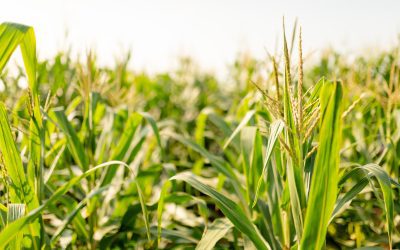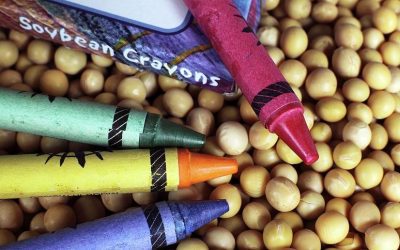By Emma Hopkins-O’Brien
Can you ask your cornfield at the beginning of the growing season if it’s feeling sick and needs to be treated for fungal infection? Sure, but you’ll probably only get weird looks from neighbors or farmhands.
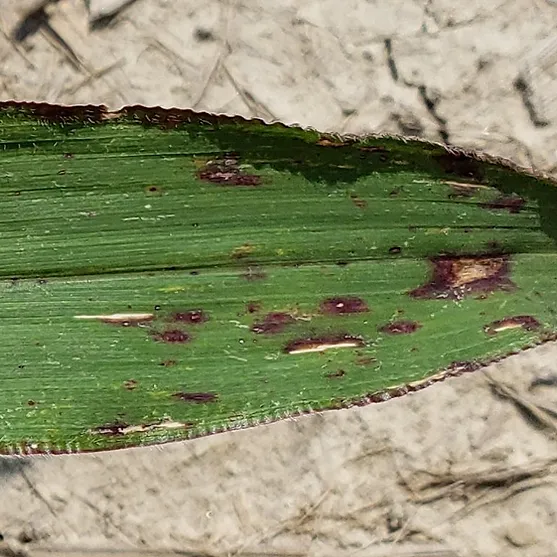
However, with recent research and a concept born from a new company called Insignum AgTech, your corn plants might be able to volunteer that information as clearly as “treat me with fungicide” written in marker on a sticky note. Kyle Mohler, founder and CEO of Insignum, used gene-editing technology to develop a product that allows corn plants to display purple dots on their leaves at the onset of disease stress. This warning allows time for farmers to treat their field long before other symptoms are visible.
“For a lot of plant stress, by the time you see it, it’s already too late to do something about it,” said Mohler, who grew up on a corn and soybean operation in Boone County, Ind., where his brother and father continue to operate about 3,700 acres.
“You see insect damage when you’ve got holes in your leaves or the corn is laying on the ground,” he said. “You see nematode pressure at the end of the year when they start to die early, and you see diseases when the plant is starting to die and turn yellow – you can’t heal problems usually once you see them in crops, so what we’re hoping to do is to get that early warning sign to help them right when it very first starts, so you can get ahead of the damage.”
Grain crops do not typically come in the color purple, but Mohler explained that plants do have the capacity to express purple pigment already in their genes. What the human eye sees as black pigment on a plant is actually a very concentrated purple. This means Mohler can coax colors ranging from red to purple or blue, even out of corn leaves that we would normally only think of as green. And it’s not just corn. Mohler said soybean plants have the same capability to produce different pigments, and Insignum fully intends to work on soybean versions of the technology.
“There is nothing transgenic in it; we are just putting two biological systems together that are already present,” he explained. “As soon as a spore is trying to infect a leaf, the corn is putting on its defense system to try to stop that infection, so we take advantage of that genetic reaction to turn on a different gene than it normally would.”
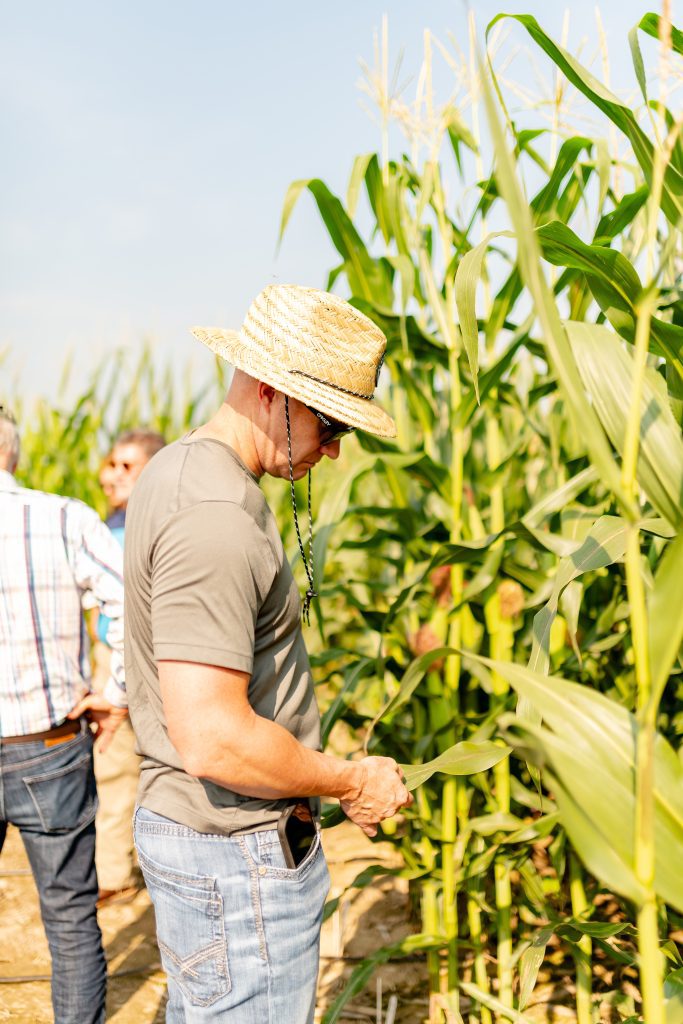
Once infected with disease, a corn plant would normally use a certain gene to trigger its natural defense system, but not the gene that triggers color production. What Mohler has done is create a new piece of DNA by joining those two genes to flip a genetic “light switch” that triggers the plant to produce purple spots at the onset of disease. He can also put together a gene that could flip a switch to produce a different color, depending on what kind of threat the plant was facing.
“In the future, we could create multiple different switches for specific problems. We could use our red color to signal for insects, we could use a blue to signal for disease or low nitrogen; we could color code different problems so that farmers could make certain applications when they need them, and only to the sections of the crop that needs it.”
Economic savings
This turns into a lot of economic savings when it comes to crop inputs, which is how Mohler came up with his idea initially. After earning his undergraduate and master’s degree from Purdue, he went to the University of Edinburgh in Scotland to complete his PhD in plant science. When he came back to his family farm in Indiana, something was different. The operation had started to utilize fungicides.
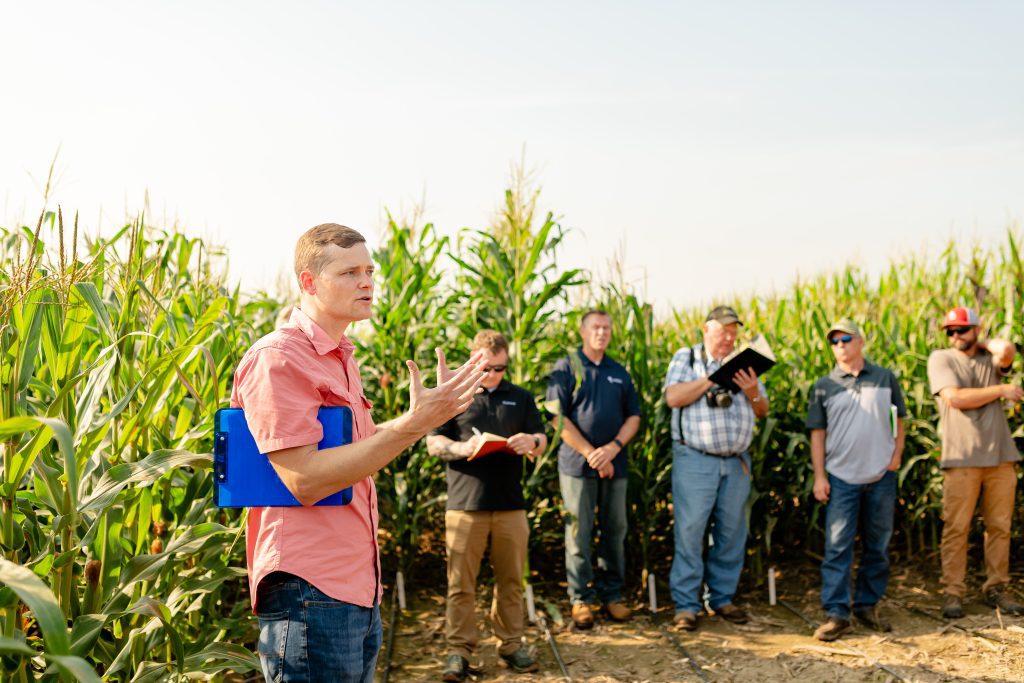
“They would buy product in the middle of the winter when they could get a discount on it, and I said, ‘why are you buying fungicide in the middle of the winter for corn that you haven’t even put seeds in the ground yet for?’ And it’s because if you wait to see if a fungal disease happens or if you realize it happens it’s already too late. So, it’s part of our plan, and it makes money on average – maybe not every year and maybe not every field, but most of the time it does.”
Though he understood the reasoning behind blanket-treating a field with fungicides, Mohler thought there had to be a better way. Widespread treatments may not pencil out economically because the producer is spending money on the entire field even though only certain parts of the field might be affected, or such a disease may not develop at all. But there are also environmental and fungicide or pesticide resistance-related downsides to treating an entire field.
“From an agronomy perspective and from a scientific perspective, resistance is a real consequence of overusing these things,” he said. “But to an individual farmer on an individual year, that’s not as much of a concern right this minute.”
The specificity of knowing not only if your field is stressed but also knowing what part of it is affected and what kind of stress is taking place is an extremely valuable part to Mohler’s technology. Specificity is also important when a producer uses other technologies such as drones or UAVs to detect problems in the field.
“Part of the struggle with the drone technology is that plants have a lot of overlapping symptoms, and it’s hard to know what exactly to treat for,” he said. “If they turn yellow or show an infrared signal or a thermal signal on the aerial imagery, there’s still a few things that could be wrong and require an agronomist or farmer to walk out to the field and diagnose exactly what the problem is.”
With Mohler’s tech, there is no need for a second opinion. The color of the dots on the corn leaves should manifest what precisely is setting off a plant’s defense system. For three years now, Mohler has been testing different types of stress on the edited corn plants, but the purple only shows when a fungal disease is causing the problem.
“We’ve seen it be very specific, and it reacts to only diseases that we have engineered it too,” Mohler said. “We have even tried with different diseases over and over again, so we’ve seen drought stress and heat stress and low fertility and insect damage, but this technology does not react to any of those. We see purple only when it’s a fungal infection.”
On-farm experimenting
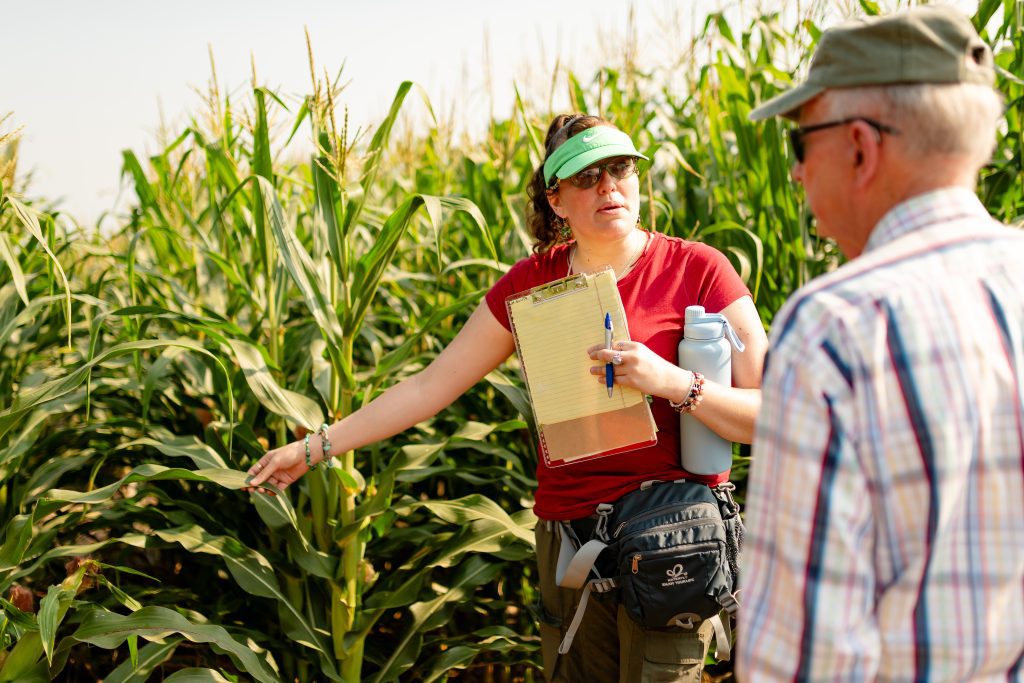
Most of the field tests of Mohler’s technology have taken place right on his family’s farm in Boone County. On-farm experimenting is something he began back in his FFA days when he did a Supervised Agricultural Experience project on production agriculture using his father’s cropping equipment and a couple fields he rented from a neighbor.
“If I were to summarize my history, I’ve spent just as much time with my hand holding the wheel of a tractor as I have holding a pipette on a science lab bench.”
Mohler expects his initial product will be able to detect any fungal infection in corn, including longstanding diseases like northern corn leaf blight, grey leaf spot and southern rust, along with newer and emerging diseases such as tar spot. On the soy side, he said white mold and soybean sudden death syndrome are among the diseases he believes the technology will be able to detect.
“What’s interesting about sudden death syndrome is that there are no treatments for it – maybe there’s some fairly early applied seed coatings for it, or early treatments that might have some impact on sudden death, but the infection cycle is the beginning of the season,” he said. “But you don’t see it until months later, so by the time you see it it’s way, way too late. If we could get an early warning on it, that would be huge, and we can start to think about applying products to try to treat it. We just don’t have any options on the market for that right now.”
Five years away
As promising as Insignum’s research is, Mohler said they are about five years away from bringing the product to market, as it needs to be licensed by seed companies along with other legal checkpoints, deregulation and multiplying the seed. However, Mohler said in a year or so producers may have the opportunity to help expediate the process.

“Part of that really long development cycle means that we need to take investment,” Mohler said. “It can be helpful for us if we get some kind of statement of interest or other support from farmers and agronomists and other people at this very early stage. One of the things that we hope to do, maybe not by next year but the year after, is to do something like a beta test if we get our seeds deregulated by next year and have seeds that are available to pass out we would like to give out garden packets that people could grow in their garden – not on their commercial fields but just to take a look at the technology.”
Mohler asks that farmers keep an eye on his company and sign up to be early testers, not only to see how the product works, but also to give feedback.
“I was very fortunate from the beginning to have the support of Purdue on this project working through my post-doc degree, and then after the project they’ve released that technology back to me,” Mohler said. “But in the meantime, they’ve now invested in our company, so I hope they can get a really big return for all of the hard work they’ve put into me and the company over the years.”

